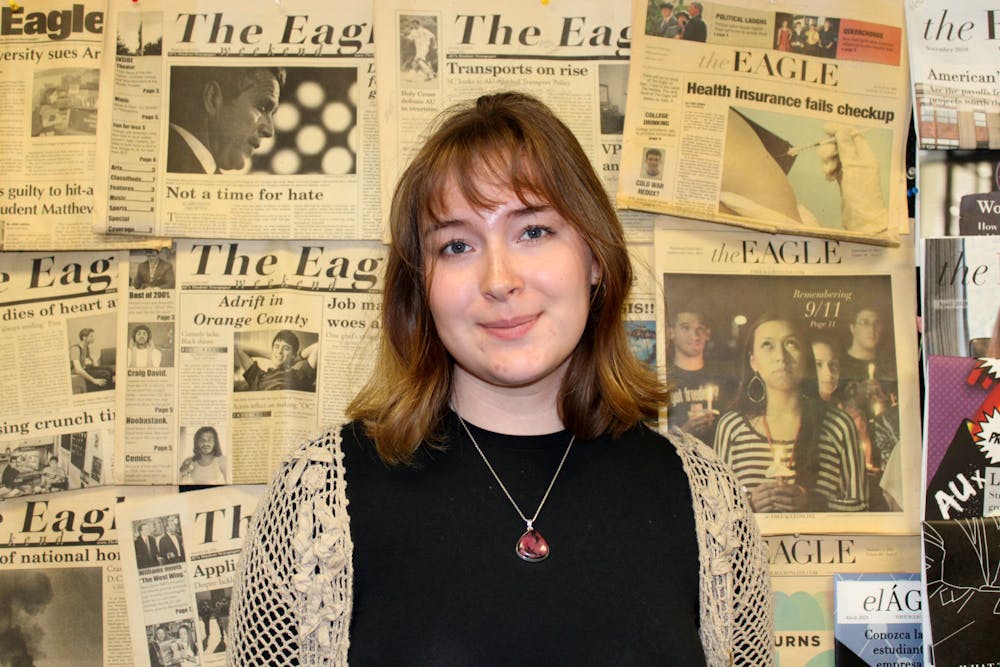Less than two miles from American University’s campus lies an underground nuclear bunker, often described as a “relic” of a far-gone era. Our grandparents, or even parents, remember times of “duck and cover,” when they were taught as students to hide under their desks to protect themselves during nuclear attacks. The era of constant nuclear threat is not as distant a memory as it may seem.
When Russian troops first invaded Ukraine in February 2022, the threat of nuclear weapons suddenly became vastly more realistic — but in a new way. This time, nuclear war would feature tactical nuclear weapons. Tactical nuclear weapons, the battlefield alternative to their traditional counterparts — strategic weapons — are smaller than strategic nuclear weapons and, though they do not contain as much radiation, they are arguably more dangerous.
Tactical weapons threaten to break the taboo against nuclear weapons use that has lasted nearly 80 years and open the floodgates for all-out nuclear war. The purpose of tactical weapons is entirely different from that of strategic weapons — to succeed in battle rather than to deter the enemy. Since their use can be excused as a strictly military or tactical action, their use is much more likely, despite their capacity for destruction, and the path towards a global nuclear conflict they could chart. These weapons are the reasons for Vladimir Putin’s constant thinly-veiled threats of nuclear war.
Although they are smaller on a physical scale, low-yield tactical weapons are still nuclear weapons, and as the saying goes, “you can’t unring a bell.” Tactical nuclear weapons do not fit within our disputed doctrine of mutually assured destruction due to their smaller area of destruction. The doctrine states that any offensive use of a nuclear weapon against another state would be met with an overwhelming nuclear counterattack. This assumption simply does not consider the impact of low-yield tactical nuclear weapons because their purpose is entirely different from traditional nukes.
Not only is the use of tactical nukes in Ukraine relevant to everyone in the world, but American University students particularly should feel connected to the issue due to the University’s unique relationship to U.S. weapons history.
Two sites deeply connect AU to the issue of weapons and mass destruction: The Navy Bomb Disposal School, a WWII era bomb disposal training site that was held on AU’s campus, and the American University Experiment Station, a WWI weapons development site on campus. U.S. intelligence also issued bulletins on enemy weaponry out of AU.
Though no nuclear weapons were ever physically on campus, the University’s history is deeply tied to the other weapons used in WWII. The American University Experiment Station was also a WWI chemical warfare testing site, situated mainly in the McKinley Building. Often described as “the birthplace of American chemical warfare,” the experiment station was home to mustard gas along with a suite of other dangerous substances.
Many of the chemical substances used to kill in WWI were developed in the McKinley Building, which now houses the School of Communication. The chemical warfare of WWI –– which AU played a direct part in –– set the precedent for the use of weapons of mass destruction. To say that nuclear weapons are distant from AU students would be inaccurate.
The history of U.S. weapons use and of American University are deeply intertwined, and as the threat of nuclear war has become all the more real since Russia’s invasion of Ukraine — AU students ought to be on the front lines of nonproliferation advocacy.
Julia Cooper is a sophomore in the School of International Service and a columnist for The Eagle.
This article was edited by Jelinda Montes, Alexis Bernstein and Abigail Pritchard. Copy editing done by Isabelle Kravis and Charlie Mennuti.





